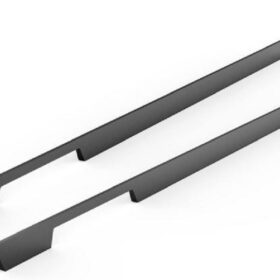Health and Safety Standards for Glass Door Profiles
Introduction
Glass door profiles play a crucial role in the safety and well-being of individuals in various settings. Establishing robust health and safety standards for these profiles is paramount to prevent injuries, ensure occupant safety, and comply with relevant regulations.
Material Properties and Strength
Glass profiles must meet specific material properties to withstand impact, prevent shattering, and provide structural stability. The thickness, composition, and tempering process of the glass are critical factors. Standards define minimum thickness requirements to prevent breakage under normal loading conditions. Additionally, impact resistance tests assess the profile’s ability to withstand accidental collisions or vandalism.
Edge Treatment and Finishing
The edges of glass door profiles pose a potential hazard if not properly treated. Sharp or jagged edges can cause cuts and lacerations. Standards mandate that edges be rounded, ground, or polished to remove any sharp protrusions. Furthermore, protective coatings or laminates may be applied to enhance edge durability and reduce the risk of breakage.
Fire Resistance and Smoke Control
In the event of a fire, glass door profiles must maintain structural integrity to prevent the spread of flames and smoke. Standards establish specific fire resistance ratings based on the intended use of the door. Glazing materials should be capable of resisting intense heat and flames for a predetermined duration, allowing time for occupants to evacuate.
Visibility and Transparency
Translucent or transparent glass profiles provide visibility and natural light, which are essential for safety and orientation in buildings. Standards ensure that the level of transparency is appropriate for the intended application. For example, in public spaces, high levels of transparency are required to promote visibility and prevent accidents.
Durability and Maintenance
Glass door profiles should be able to withstand wear and tear under normal operating conditions. Standards specify requirements for durability, including resistance to scratches, weathering, and corrosion. Additionally, maintenance guidelines are provided to ensure that profiles are regularly cleaned and inspected to maintain their safety and aesthetic integrity.
Compliance with Regulations
Health and safety standards for glass door profiles are often governed by local or national regulations. Compliance with these regulations is mandatory to ensure the safety of occupants and protect businesses from liability. Standards provide clear guidelines on permissible materials, design criteria, and installation practices to meet regulatory requirements.
Conclusion
Establishing and adhering to robust health and safety standards for glass door profiles is essential to protect occupants from injuries, prevent property damage, and comply with regulations. By addressing material properties, edge treatment, fire resistance, visibility, durability, and compliance, these standards ensure that glass door profiles contribute to a safe and secure environment in various settings.
-
2024-11-29Top Trends in Modern Kitchen Cabinet Pulls for 2024
-
2024-11-28The Ultimate Guide to Modern Kitchen Cabinet Pulls- Materials, Styles, and Tips
-
2024-11-27Elevate Your Kitchen Design with These Must-Have Modern Cabinet Pulls
-
2024-11-26Sleek and Stylish- The Best Modern Kitchen Cabinet Pulls for a Contemporary Look










